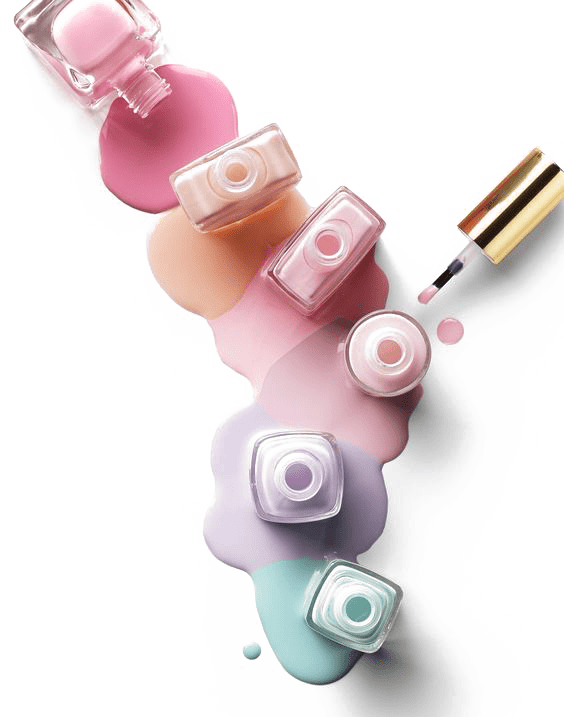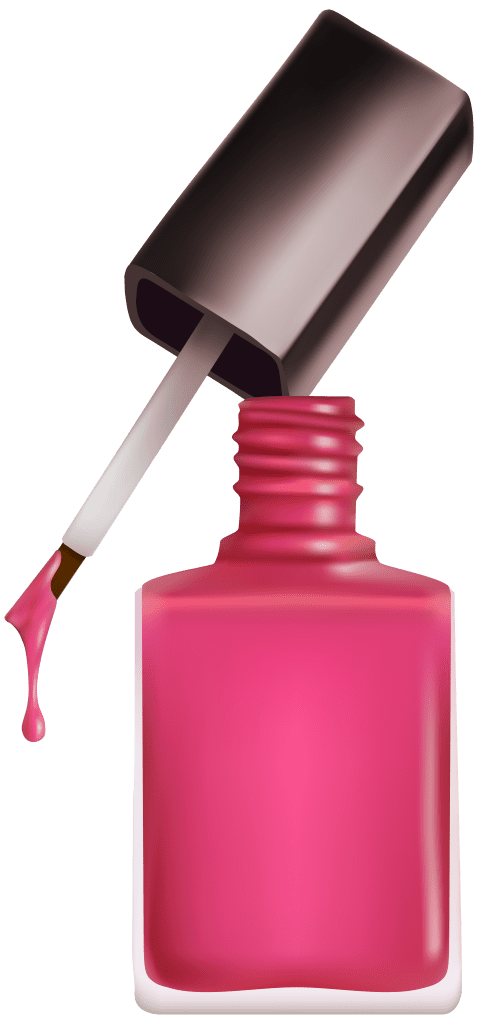Information
Nail polish remover is a common product used by individuals to remove nail polish from their nails. However, have you ever wondered what makes nail polish remover so effective in dissolving and removing the stubborn polish? One key component used in many nail polish removers is caustic soda, also known as sodium hydroxide. Caustic soda plays a crucial role in the chemical makeup of nail polish removers, facilitating the removal process. In this article, we will delve into the details of how nail polish remover utilizes caustic soda as a key component, exploring its chemical properties, manufacturing process, impact on dissolving nail polish, as well as safety precautions and potential alternatives. By understanding the science behind nail polish removers, we can gain a deeper appreciation for the role that caustic soda plays in this common beauty product.

1. Introduction to nail polish remover
1.1 Overview of nail polish removers
Nail polish removers are a staple in every nail care routine. They are essential for removing old nail polish and prepping the nails for a fresh coat. But have you ever wondered what makes nail polish remover so effective? It turns out that one of the key ingredients in nail polish remover is caustic soda, which plays a vital role in its formulation.
1.2 Importance of understanding key components
Understanding the key components of nail polish remover is important to make informed choices about the products we use. By delving into the science behind nail polish removers, we can gain a greater appreciation for the role of caustic soda and its impact on the performance and safety of these products.
2. Understanding the role of caustic soda in nail polish remover
2.1 Definition and properties of caustic soda
Caustic soda, also known as sodium hydroxide, is a strong alkaline compound widely used in various industries. It is a white, solid substance that dissolves readily in water. Caustic soda is highly reactive and has a corrosive nature, making it a powerful ingredient in nail polish removers.
2.2 Why caustic soda is used in nail polish remover
Caustic soda is used in nail polish remover for its ability to break down the chemical structure of nail polish. It acts as a solvent, effectively dissolving the polymers and pigments present in nail polish. This makes it easier to remove the stubborn layers of polish from our nails, allowing us to start fresh with a clean canvas.
3. The chemical composition of caustic soda and its properties
3.1 Chemical formula and structure of caustic soda
The chemical formula for caustic soda is NaOH, indicating the presence of one sodium atom (Na), one oxygen atom (O), and one hydrogen atom (H). Its structure consists of a sodium ion bonded to a hydroxide ion, which gives caustic soda its strong alkaline properties.

3.2 Physical and chemical properties of caustic soda
Caustic soda is highly soluble in water, producing a highly alkaline solution. It generates heat when dissolved in water, indicating its exothermic nature. This heat release enhances the effectiveness of caustic soda in breaking down nail polish. Additionally, caustic soda has a strong affinity for fats and oils, further aiding in the removal of nail polish.
4. The process of manufacturing nail polish remover with caustic soda
4.1 Overview of the manufacturing process
The manufacturing process of nail polish remover involves blending various ingredients, including caustic soda, solvents, and conditioning agents. These components are carefully formulated to create a product that effectively removes nail polish without causing excessive damage to the nails or cuticles.
4.2 Role of caustic soda in the manufacturing process
Caustic soda acts as a key ingredient in the manufacturing process of nail polish remover. Its inclusion allows for the efficient removal of nail polish by breaking down the polymer matrix and pigments. However, it is essential to use caustic soda in safe concentrations to prevent skin irritation or damage. Manufacturers ensure that the final product is well-balanced, effective, and safe for consumer use.
So, the next time you reach for that bottle of nail polish remover, remember the role of caustic soda in making your nail care routine a breeze.
5. The role of caustic soda in dissolving nail polish
5.1 How caustic soda interacts with nail polish
When it comes to removing that stubborn nail polish, caustic soda plays a crucial role in the process. But how does it actually interact with the polish? Well, caustic soda, also known as sodium hydroxide, is a highly alkaline compound that has the ability to break down the chemical bonds in nail polish.
5.2 Mechanism of action of caustic soda in dissolving nail polish
Think of caustic soda as a superhero swooping in to save the day—well, your nails actually. Once applied to the nail polish, caustic soda begins to disintegrate the tough polymers present in the polish. It cuts through the layers of color and pigments, rendering them soluble. This loosens the grip of the nail polish from your nails, making it easier to wipe away.

6. Safety precautions and potential risks associated with caustic soda in nail polish remover
6.1 Handling and storage guidelines
Caustic soda may be a nail polish superhero, but it does come with a few safety precautions. When handling caustic soda, it’s crucial to wear protective gloves and goggles to prevent any accidental contact with your skin or eyes. Additionally, it’s important to store caustic soda in a secure and dry place, away from moisture or other chemicals that could cause a reaction.
6.2 Potential risks and precautions to consider
While caustic soda can be effective in removing nail polish, it’s important to be aware of its potential risks. Direct contact with caustic soda can cause skin irritation, burns, and even serious eye damage. So, always exercise caution when using nail polish removers containing caustic soda. If any accidental contact occurs, rinse the affected area thoroughly with water and seek medical attention if necessary.
7. Alternatives to caustic soda in nail polish remover
7.1 Overview of alternative ingredients
If you’re not a fan of caustic soda or have sensitivities to its alkaline nature, fret not! There are alternative ingredients used in nail polish remover formulations. Some common alternatives include acetone, ethyl acetate, and isopropyl alcohol. These ingredients work by breaking down and dissolving the nail polish just like caustic soda.
7.2 Pros and cons of using alternatives to caustic soda
While alternatives to caustic soda provide a different approach to removing nail polish, they also come with their own pros and cons. Acetone, for example, is highly effective in removing stubborn polish but can be drying to the nails and cuticles. Ethyl acetate is more gentle but may require more effort to remove certain types of polish. Isopropyl alcohol is a less harsh option, but it may take a bit longer to dissolve the polish. Ultimately, it’s about finding the alternative that suits your preferences and needs best.
8. Future developments and advancements in nail polish remover technology
8.1 Emerging trends and innovations
It’s no secret that the beauty industry is constantly evolving, and nail polish removers are no exception. Emerging trends in nail polish remover technology include the introduction of natural and eco-friendly alternatives. These formulations aim to provide effective polish removal while minimizing the use of harsh chemicals.
8.2 Potential impact on the use of caustic soda in nail polish remover
With these advancements on the horizon, it’s possible that the use of caustic soda in nail polish removers may decline in popularity. As consumers become more conscious of the ingredients they put on their bodies and the environment, the demand for alternative options may increase. However, caustic soda will likely continue to be utilized due to its effectiveness in removing stubborn nail polish.
So, whether you opt for caustic soda or explore the alternatives, remember that the goal is to achieve fabulous nails without sacrificing safety and personal preferences.In conclusion, caustic soda is a vital ingredient in nail polish removers, enabling the effective removal of nail polish. Its chemical composition and properties make it an ideal component for dissolving and breaking down stubborn nail polish. However, it is important to handle caustic soda with caution and follow proper safety guidelines due to its potential risks. As technology advances, we may see the emergence of alternative ingredients or innovative approaches in nail polish remover formulations. By staying informed about these advancements and considering safety precautions, we can continue to enjoy the convenience and efficiency of nail polish removers while minimizing potential risks.

FAQ
1. Is caustic soda safe to use in nail polish remover?
Caustic soda, or sodium hydroxide, is a strong alkaline compound that should be handled with care. While it is generally safe to use in nail polish removers when used properly, it is important to follow safety precautions such as wearing gloves and ensuring proper ventilation. Avoid contact with skin or eyes and keep it out of reach of children.
2. Can caustic soda in nail polish remover damage my nails?
When used as directed, caustic soda in nail polish remover should not cause direct harm to your nails. However, it is important to avoid prolonged exposure to the skin or nails, as it may cause dryness or irritation. To minimize any potential damage, it is recommended to moisturize your nails and cuticles after using nail polish remover.
3. Are there any alternative ingredients to caustic soda in nail polish removers?
Yes, there are alternative ingredients used in some nail polish removers. These alternatives may include acetone, ethyl acetate, or other solvents. It is important to read the product labels and choose a nail polish remover that suits your preferences and skin sensitivity. If you are allergic or have specific concerns about caustic soda, exploring alternatives can be a viable option.
4. Can I make my own nail polish remover without caustic soda?
Yes, it is possible to make DIY nail polish removers without caustic soda. Some common household ingredients that can be used include vinegar, lemon juice, rubbing alcohol, or non-acetone based removers. However, it is essential to research and follow trusted recipes or consult with professionals to ensure safety and effectiveness when making your own nail polish remover.









